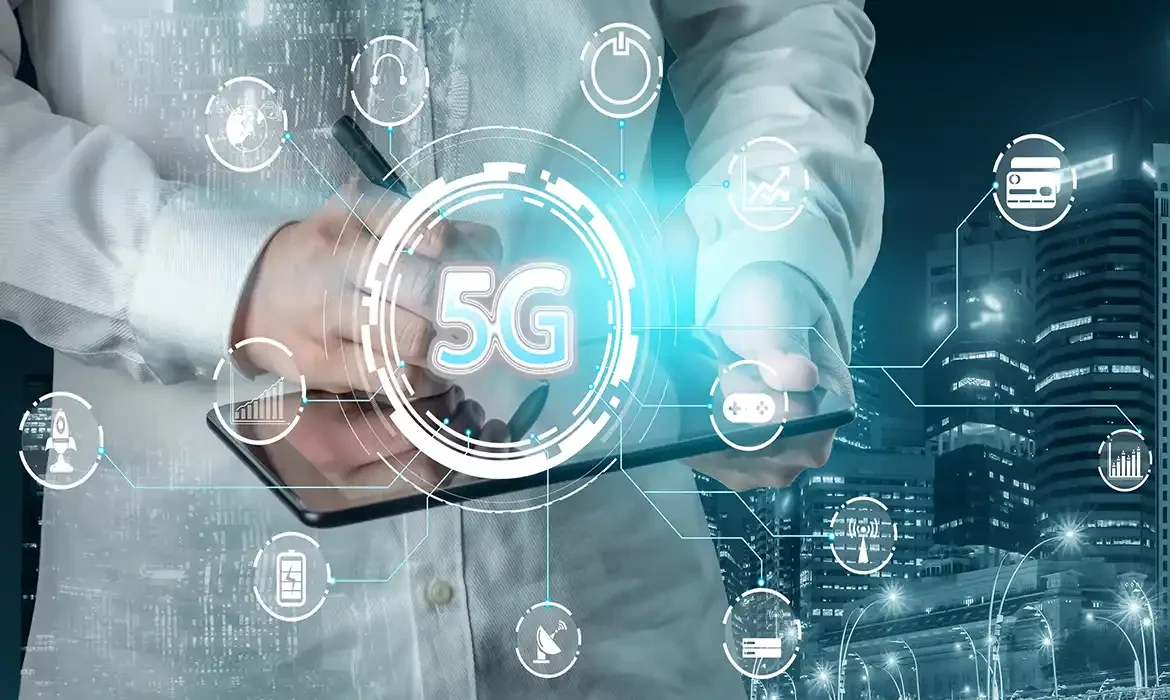5G Networks – How it Leads the Way for Network Technology

We initially started with voice calls in 1G, digital transmission and SMS in 2G, and finally, internet access and multimedia in 3G. Then came high-speed broadband for video and social media in 4G, and now, ultra-fast speeds enabling AR, VR, autonomous vehicles, and IoT in 5G.
Professor Vucetic, an expert in 5G and the director of the Centre for IoT and Telecommunications, emphasizes 5G’s importance: ‘It’s more than just the next step; it’s a big change globally, set to revolutionize how we connect. We have all heard the buzz, but what exactly is 5G? How does it work, and what benefits does it offer over its predecessors? Find out the answers to all these questions and more in this blog.
What is 5G Technology?
Margaret Mead once said, ‘Never doubt that a small group of thoughtful, committed citizens can change the world; indeed, it’s the only thing that ever has. This idea resonates with the development of 5G technology, which is led by companies like Qualcomm, Huawei, Ericsson, and Nokia. 5G brings faster and more reliable mobile communication. 5G is the latest in wireless technology, offering faster speeds, lower latency, and better connectivity than its predecessors.
It opens doors to innovations like augmented reality and autonomous vehicles. Despite starting small, 5G has the potential to transform how we communicate and interact.
How Does it Work?
It is human nature that when we first encounter something new, we often find ourselves conflicted and curious about how it works. When it comes to 5 G it is the latest generation of mobile network technology.
It works like an upgrade to your current mobile network (like 4G), but it is much faster and better in many ways. However, before properly understanding how the 5 G network works, we need to familiarize ourselves with its key components.


Key Components of 5G Technology
Higher Frequencies: Millimeter waves for more data, but shorter range.
Massive MIMO: Multiple antennas for simultaneous data transmission.
Beamforming: Directs signals to users, reducing interference.
Small Cells: Closer base stations for continuous coverage.
Network Slicing: Customized virtual networks for different applications.
How 5G Works
Signal Transmission: Base stations transmit data using millimeter waves, requiring more stations.
Receiving Devices: Devices equipped with 5G modems receive high-frequency signals.
Data Processing: Advanced techniques like OFDM modulate signals for high data rates and low latency.
Types of 5G Network
There are three main types of spectrum bands of 5G Network: low-band, mid-band, and high-band:
Low-band 5G: It offers wide coverage with decent speeds, suitable for rural areas. It operates at frequencies below 2 GHz and has average download speeds of around 55 Mbps in the U.S.
Mid-band 5G: Mid-band 5G balances coverage and speed, working at frequencies between 2 and 7 GHz. It’s great for urban areas and various uses, with download speeds expected to reach 1.5 Gbps.
High-band 5G: High-band 5G is super-fast but has limited coverage. It uses frequencies above 24 GHz, offering speeds up to 3 Gbps, perfect for tasks like VR and HD video streaming.
Benefits of 5G- How Fast is It
5G technology is not just about faster speeds; it’s about creating a more connected, innovative, and inclusive world for everyone. Here’s a look at how it’s changing the game:
Lightning-fast Speeds: With 5G, downloading movies and streaming HD content happens in seconds, not minutes.
Better Connectivity: It can handle tons of devices at once, making things like smart cities and remote medical monitoring a reality.
Innovation Boost: 5G speeds and low latency enable things like self-driving cars and remote surgery, pushing the boundaries of what’s possible.
Economic Growth: Businesses big and small benefit, leading to more jobs and opportunities for everyone.
Closing the Gap: 5G can bring high-speed internet to places that don’t have it yet, helping communities grow and thrive.

Final Thought
5G technology is a major leap forward, revolutionizing our connections and innovations. With super-fast speeds, low latency, and better connectivity, it enables advancements in areas like augmented reality, self-driving cars, and smart cities. 5G also boosts economic growth and helps bring high-speed internet to underserved areas. Overall, 5G is set to transform our digital world, making it more connected and innovative for everyone.

